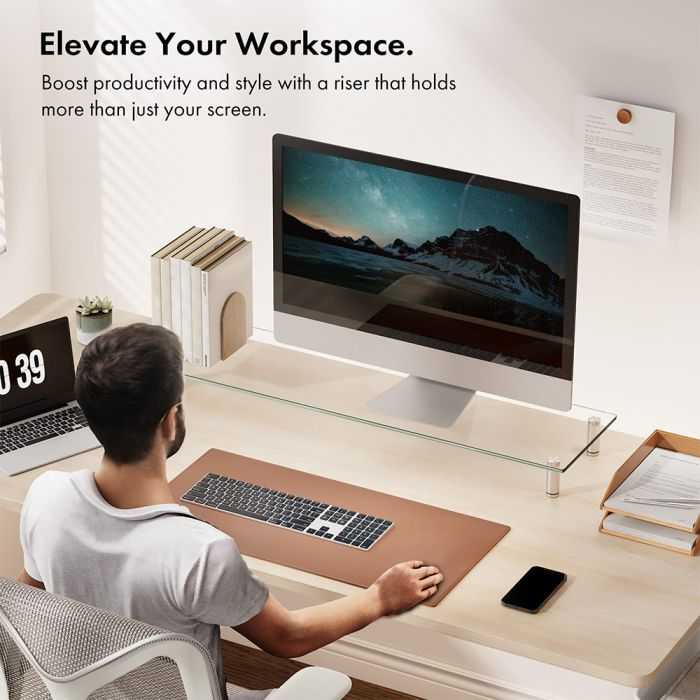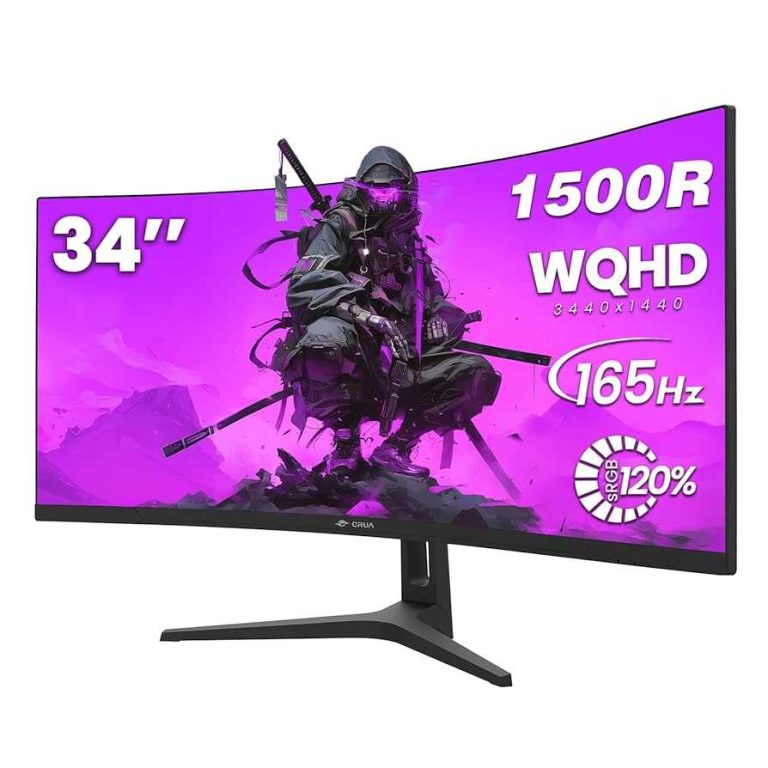An ultrawide monitor’s aspect ratio is typically 21:9, giving you a much broader view compared to standard screens. This aspect ratio enhances your experience whether you’re gaming, working, or watching movies, by providing a wider and more immersive display.
In essence, an ultrawide monitor’s aspect ratio refers to the proportional relationship between its width and height. Unlike traditional monitors with a 16:9 aspect ratio, ultrawide displays usually have a 21:9 ratio, offering extra horizontal space. This design allows for better multitasking, more immersive multimedia experiences, and a more expansive field of view.
If you’re curious about what makes ultrawide monitors special and how their aspect ratio influences your viewing experience, you’re in the right place. The aspect ratio is the key to understanding why these screens feel so spacious and immersive. By knowing the typical ratios and what they mean, you’ll better appreciate what ultrawide monitors have to offer and how they can transform your digital activities.
What Aspect Ratio Is Ultralwide Monitor?
An ultrawide monitor is a popular choice for many users who want more screen space. But what exactly is the aspect ratio of these monitors? To understand that, let’s first define what aspect ratio means in the context of screens and displays.
Understanding Aspect Ratio
Aspect ratio describes the proportional relationship between a monitor’s width and its height. It is usually expressed as two numbers separated by a colon, for example, 16:9 or 21:9.
This ratio helps identify how wide or tall a display is, and it influences how images and videos are presented. Different aspect ratios suit distinct uses, like gaming, watching movies, or professional editing.
What Makes a Monitor Ultralwide?
An ultrawide monitor is characterized by a wider aspect ratio compared to standard screens. It provides a broader field of view, making it ideal for multitasking, immersive gaming, or detailed work.
The defining feature of an ultrawide monitor is its wide format, which allows users to see more content without needing multiple screens. This is especially useful for professional tasks requiring large timelines or extensive spreadsheets.
Common Aspect Ratios of Ultralwide Monitors
Most ultrawide monitors have aspect ratios greater than 16:9, which is the standard for most TVs and monitors. The most popular ultrawide aspect ratios include:
- 21:9 – Often called “ultrawide” or “cinematic,” this ratio is common among gaming and high-end productivity monitors.
- 32:9 – Known as “super ultrawide,” providing the equivalent of two 16:9 monitors side by side.
- 32:10 – Sometimes called “super ultra,” offering more vertical space for productivity.
Details of the 21:9 Aspect Ratio
The 21:9 aspect ratio is the most prevalent among ultrawide monitors. It closely resembles the aspect ratio used in cinema films, offering a cinematic experience on your desk.
For instance, a 34-inch ultrawide monitor with a 21:9 aspect ratio usually has a resolution of 3440 x 1440 pixels. This provides a good balance between screen size, sharpness, and performance.
Understanding the 32:9 Aspect Ratio
The 32:9 aspect ratio doubles the width of a 16:9 display, essentially mimicking two monitors side by side. It’s perfect for multitasking because you can have multiple windows open without overlapping.
This ratio’s resolution often reaches 3840 x 1080 pixels on a 49-inch screen, giving an expansive view suitable for gaming, trading, or professional work that demands many open applications.
What About 32:10 and Other Ratios?
The 32:10 aspect ratio offers an even taller screen than 21:9, useful for adding vertical workspace. It typically measures around 34 inches diagonally, with resolutions like 3440 x 1200 pixels.
Some ultrawide monitors also feature aspect ratios like 16:10 or 5:4, but these are less common in ultrawide formats. They are more often seen in traditional or professional monitors.
How Aspect Ratio Affects Screen Experience
The aspect ratio directly impacts how content appears on your screen. A wider ratio allows more of a scene or document to be visible at once, reducing the need for scrolling or switching between windows.
For gaming, ultrawide aspect ratios create a more immersive environment, especially for racing, shooting, or open-world games. For professional tasks, these ratios boost productivity by enabling better multitasking.
Comparison Table: Standard vs. Ultrawide Aspect Ratios
| Aspect Ratio | Common Use | Typical Resolution | Screen Width to Height |
|---|---|---|---|
| 16:9 | TVs, Monitors, Videos | 1920×1080 (Full HD), 3840×2160 (4K) | Widescreen standard |
| 21:9 | Ultrawide Monitors, Cinematic Films | 3440×1440, 2560×1080 | Very wide, cinematic view |
| 32:9 | Super ultrawide gaming and multitasking | 3840×1080, 5120×1440 | Extremely wide, dual monitor experience |
| 32:10 | Enhanced vertical workspace | 3440×1200 | Taller than 21:9 |
Why Choose an Ultrawide Monitor?
Many users prefer ultrawide monitors because they offer a more panoramic view than traditional screens. This makes them excellent for multitasking, gaming, or watching movies.
The high width-to-height ratio creates an engaging experience that feels more natural for certain applications, especially when compared to standard 16:9 screens.
Considerations When Buying an Ultrawide Monitor
Before choosing a monitor, consider the aspect ratio that best suits your needs. Think about your workspace, the types of content you view or create, and your budget.
Monitor size also matters—larger screens with wider ratios can be costly but provide a more immersive experience. Make sure your graphics card can support the resolution and aspect ratio you choose.
In summary, the aspect ratio of ultrawide monitors is mainly 21:9, 32:9, or 32:10, with 21:9 being the most common. Each ratio offers different advantages depending on your usage, whether it’s for gaming, work, or multimedia viewing. Understanding these ratios helps you select the right monitor to improve your overall experience and productivity.
Frequently Asked Questions
What is the common aspect ratio for ultrawide monitors?
Most ultrawide monitors feature an aspect ratio of 21:9, which provides a wider screen compared to standard monitors. Some models may go up to 32:9, offering even more horizontal space to enhance multitasking and immersive viewing experiences.
How does the aspect ratio affect the display area of an ultrawide monitor?
The aspect ratio determines the width relative to the height of the screen. A higher ratio, like 21:9, results in a broader field of view, making it ideal for multitasking, gaming, and multimedia. It allows for more content to be visible without the need for additional screens.
Are ultrawide monitors with different aspect ratios suitable for gaming or professional use?
Yes, ultrawide monitors with aspect ratios like 21:9 or even 32:9 offer extensive viewing areas that benefit both gaming and professional tasks. They provide more immersive experiences in games and improve productivity by enabling multiple windows to be open side by side.
Can the aspect ratio of an ultrawide monitor impact its compatibility with various applications?
Indeed, some applications may not support ultra-wide aspect ratios perfectly, which can lead to display stretching or black bars. However, many modern programs and operating systems adapt well to these screens, offering an optimal viewing experience for most users.
Final Thoughts
An ultrawide monitor typically has an aspect ratio of 21:9, which provides a broader field of view compared to standard monitors. This aspect ratio enhances gaming, multitasking, and immersive viewing experiences.
Understanding what aspect ratio is ultrawide monitor helps users choose the right display for their needs. It emphasizes how the wider format can improve productivity and entertainment.
In summary, the aspect ratio that defines an ultrawide monitor is 21:9, offering a unique and expansive viewing experience.
I’m passionate about hardware, especially laptops, monitors, and home office gear. I share reviews and practical advice to help readers choose the right devices and get the best performance.





